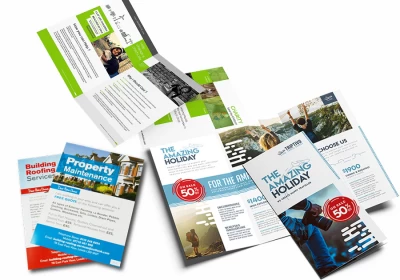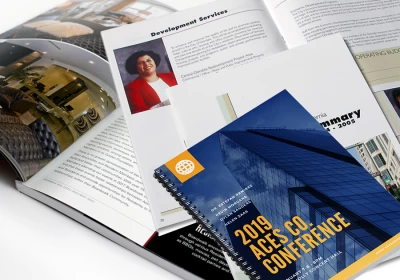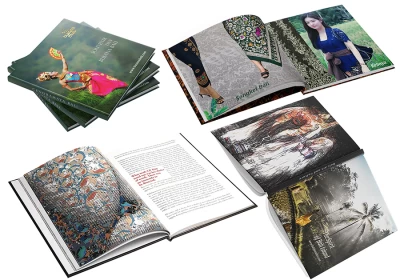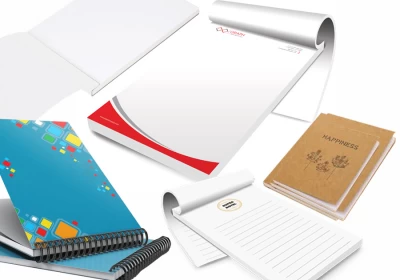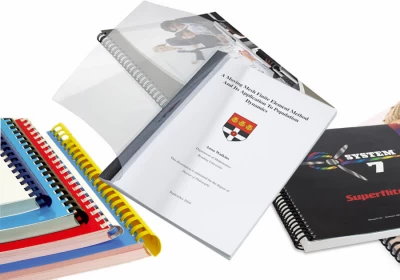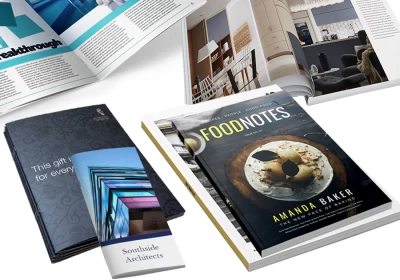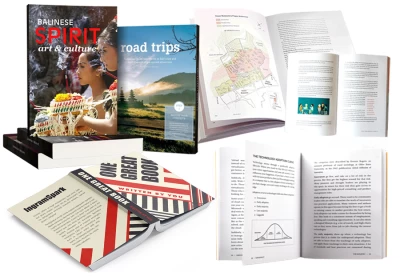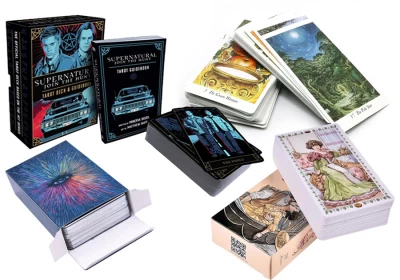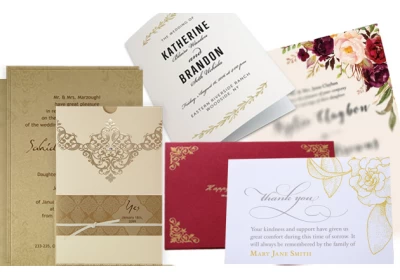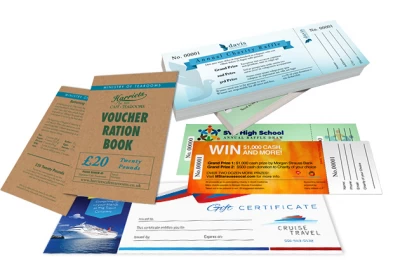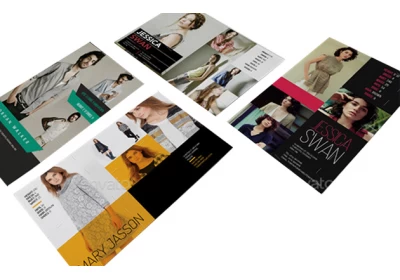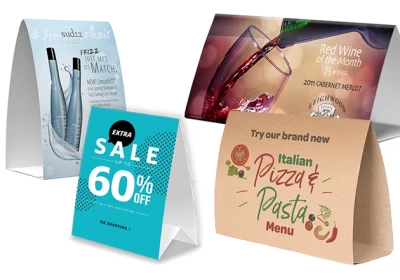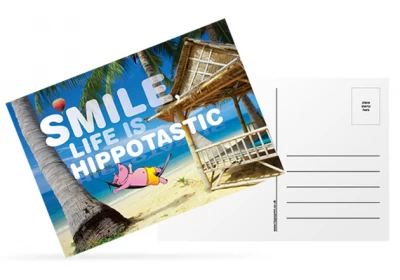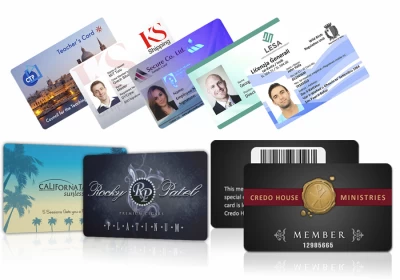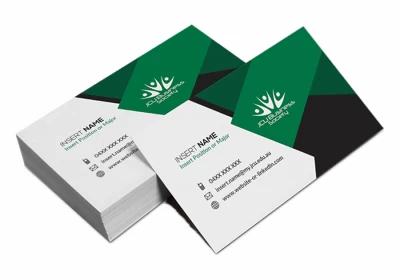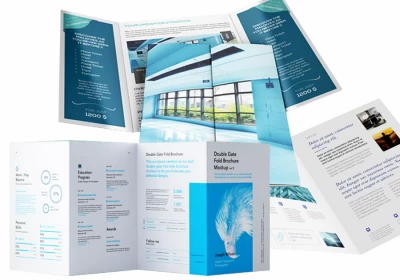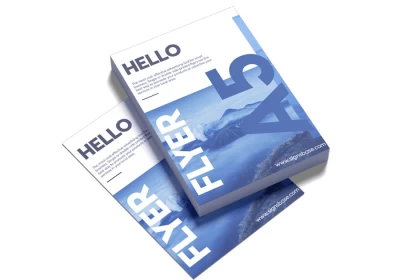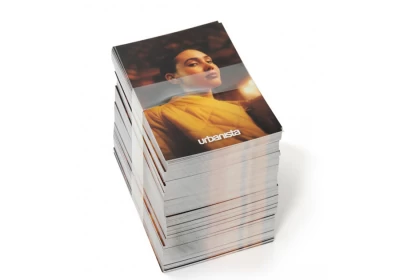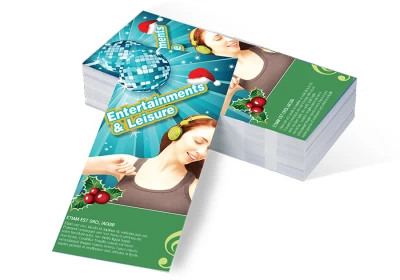Paper Type & Weight
The paper type and weight can sometimes affect how you prepare your
press ready files, especially related to folding and binding, so confirm
your paper choice with your printer to make sure any considerations are
accommodated.
Paper options can be daunting: here's what you need to know to get started.
A paper's weight is, more or less, a measure of its thickness. A higher weight will be sturdier, thicker and firmer. Higher weight papers are great for business cards, bottle-neckers, cards, tags and catalog covers. Lighter weight papers are ideal for brochures, envelopes, stationery and interior pages of catalogs. Higher weight paper is usually more expensive.
There are also premium papers that are made with a high quality texture. They feel great to the touch and are used for some stationery, formal invitations, artwork and important legal documents. Choosing a paper weight means thinking about how your piece will be used. Will it be held? Will it be abused in a wallet or purse? Will it be bound into a thick, hundred page catalog? Is it going to be folded?
The technical definition of weight, or gram, is “the weight of a sheet of paper with a surface area of one square metre”; in other words, it represents the ratio between the weight of the paper and its area. It is measured in grams per square metre (gsm) or simply in grams (g) and is a way of distinguishing between the various types of paper on the market, along with some other characteristics, which we will look at shortly.
For example, photocopy paper (also known as ‘uncoated paper’) has a weight of between 60 gsm and 100 gsm, while paperboard has a weight ranging from 150 gsm up to 350 gsm. The grammage affects the paper’s texture to the touch and its level of transparency, which will be lower if you choose a paper with a higher weight. It’s important to distinguish between the weight of the paper and the thickness, or calliper, of the sheet.
Papers also come coated or uncoated. Coated papers have a gloss or matte finish that resists smudges and stains and displays the ink brighter and crisper. This also makes writing on the paper difficult. It's best used for brochures, some business cards and marketing pieces that need to look higher end and aren't being used for writing.
Uncoated papers lack this solid surface and are more porous. They are easy to write on, but can get smudged and stained more easily and the ink looks duller.
Whether you’re printing business cards or books, or producing an advertising display or a flyer, every product has a recommended weight. Choosing the wrong type of paper for printing your graphic design or publishing project can ruin the final effect

Available 70-250 gsm paper falls into the uncoated paper, and is a natural, wood-free paper, which is not subjected to any chemical treatments. Plain paper, also known as "HVS" 60-80 gsm it is ideal for printing large quantities of text, producing a relatively light and thin printed document. It can be used in either a white colour for the inside pages of paperbook prints and for printing documents , envelopes or letter head paper. Uncoated 200-250 gsm paper suck as BC paper and Bluish White are ideal for certificates, any card, ticket, invitation, postcard, voucher and posters.

Coated paper with a grammage of 85 - 190 gsm (generally use artpaper) are suited to reproducing high-quality colour images and is perfect for printing for glossy tabloid or magazines, folder flyer and brochures. The 210-230 gsm paper, a relatively light paperboard, which ensures a pleasant texture and excellent colour rendering and is ideal for printing booklet, presentations, and posters. It is available in coated, environmentally friendly and can be given a gloss or matte laminate finish.
Artcarton 260 semi-rigid paperboard is recommended for creating business cards, book covers, presentation folders and invitation cards. Its thickness ensures excellent strength and durability. The 310 - 350 gsm artcarton / artpaper is a cardboard used for packaging, rigid book covers and folders, counter displays and product tags. It is highly shock- and dent-proof.

Made from re-used paper products, recycled paper is perfect for those who are trying to reduce their environmental impact. To be truly eco-friendly, white recycled paper must be bleached without using polluting chemicals. Example for this type paper is "Brown paper" or Craft Paper.
WATERMARKED PAPER
Used in high quality paper watermarked paper give a feel of luxury and high quality. To create its desired effect an impression is pressed into the paper by attaching a wire pattern. This type of paper is commonly used as a security feature for important documents, including exam certificates.

SPECIAL PAPER
Papers and paperboards that have undergone specific processes such as coating, laminating or other procedures to achieve highly original visual and tactile effects.
So now you’ve decided on the paper type, next comes the size. As there are many sizes of paper you can become lost amongst differing measurements.
Paper options can be daunting: here's what you need to know to get started.
Choose Paper with the Right Weight
A paper's weight is, more or less, a measure of its thickness. A higher weight will be sturdier, thicker and firmer. Higher weight papers are great for business cards, bottle-neckers, cards, tags and catalog covers. Lighter weight papers are ideal for brochures, envelopes, stationery and interior pages of catalogs. Higher weight paper is usually more expensive.
There are also premium papers that are made with a high quality texture. They feel great to the touch and are used for some stationery, formal invitations, artwork and important legal documents. Choosing a paper weight means thinking about how your piece will be used. Will it be held? Will it be abused in a wallet or purse? Will it be bound into a thick, hundred page catalog? Is it going to be folded?
What is paperweight?
The technical definition of weight, or gram, is “the weight of a sheet of paper with a surface area of one square metre”; in other words, it represents the ratio between the weight of the paper and its area. It is measured in grams per square metre (gsm) or simply in grams (g) and is a way of distinguishing between the various types of paper on the market, along with some other characteristics, which we will look at shortly.
For example, photocopy paper (also known as ‘uncoated paper’) has a weight of between 60 gsm and 100 gsm, while paperboard has a weight ranging from 150 gsm up to 350 gsm. The grammage affects the paper’s texture to the touch and its level of transparency, which will be lower if you choose a paper with a higher weight. It’s important to distinguish between the weight of the paper and the thickness, or calliper, of the sheet.
Choose the Paper Type
Papers also come coated or uncoated. Coated papers have a gloss or matte finish that resists smudges and stains and displays the ink brighter and crisper. This also makes writing on the paper difficult. It's best used for brochures, some business cards and marketing pieces that need to look higher end and aren't being used for writing.
Uncoated papers lack this solid surface and are more porous. They are easy to write on, but can get smudged and stained more easily and the ink looks duller.
Whether you’re printing business cards or books, or producing an advertising display or a flyer, every product has a recommended weight. Choosing the wrong type of paper for printing your graphic design or publishing project can ruin the final effect
UNCOATED PAPER

Available 70-250 gsm paper falls into the uncoated paper, and is a natural, wood-free paper, which is not subjected to any chemical treatments. Plain paper, also known as "HVS" 60-80 gsm it is ideal for printing large quantities of text, producing a relatively light and thin printed document. It can be used in either a white colour for the inside pages of paperbook prints and for printing documents , envelopes or letter head paper. Uncoated 200-250 gsm paper suck as BC paper and Bluish White are ideal for certificates, any card, ticket, invitation, postcard, voucher and posters.
COATED PAPER

Coated paper with a grammage of 85 - 190 gsm (generally use artpaper) are suited to reproducing high-quality colour images and is perfect for printing for glossy tabloid or magazines, folder flyer and brochures. The 210-230 gsm paper, a relatively light paperboard, which ensures a pleasant texture and excellent colour rendering and is ideal for printing booklet, presentations, and posters. It is available in coated, environmentally friendly and can be given a gloss or matte laminate finish.
Artcarton 260 semi-rigid paperboard is recommended for creating business cards, book covers, presentation folders and invitation cards. Its thickness ensures excellent strength and durability. The 310 - 350 gsm artcarton / artpaper is a cardboard used for packaging, rigid book covers and folders, counter displays and product tags. It is highly shock- and dent-proof.
RECYCLED PAPER

Made from re-used paper products, recycled paper is perfect for those who are trying to reduce their environmental impact. To be truly eco-friendly, white recycled paper must be bleached without using polluting chemicals. Example for this type paper is "Brown paper" or Craft Paper.
WATERMARKED PAPER
Used in high quality paper watermarked paper give a feel of luxury and high quality. To create its desired effect an impression is pressed into the paper by attaching a wire pattern. This type of paper is commonly used as a security feature for important documents, including exam certificates.

SPECIAL PAPER
Papers and paperboards that have undergone specific processes such as coating, laminating or other procedures to achieve highly original visual and tactile effects.
So now you’ve decided on the paper type, next comes the size. As there are many sizes of paper you can become lost amongst differing measurements.

